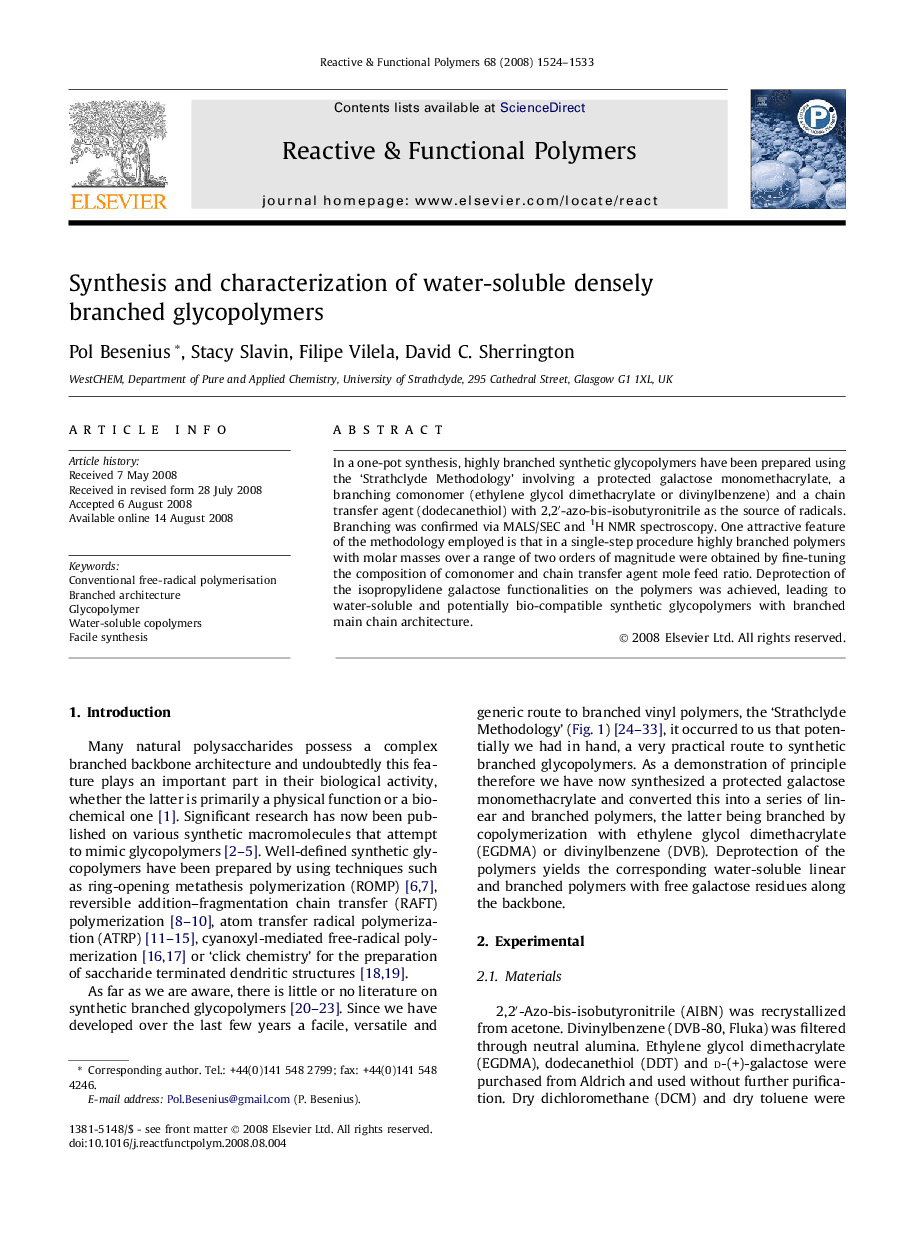| Article ID | Journal | Published Year | Pages | File Type |
|---|---|---|---|---|
| 5211329 | Reactive and Functional Polymers | 2008 | 10 Pages |
In a one-pot synthesis, highly branched synthetic glycopolymers have been prepared using the 'Strathclyde Methodology' involving a protected galactose monomethacrylate, a branching comonomer (ethylene glycol dimethacrylate or divinylbenzene) and a chain transfer agent (dodecanethiol) with 2,2â²-azo-bis-isobutyronitrile as the source of radicals. Branching was confirmed via MALS/SEC and 1H NMR spectroscopy. One attractive feature of the methodology employed is that in a single-step procedure highly branched polymers with molar masses over a range of two orders of magnitude were obtained by fine-tuning the composition of comonomer and chain transfer agent mole feed ratio. Deprotection of the isopropylidene galactose functionalities on the polymers was achieved, leading to water-soluble and potentially bio-compatible synthetic glycopolymers with branched main chain architecture.
